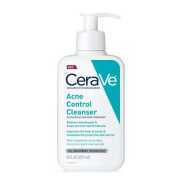Comparison between Johnson And Johnson Johnson'S Baby Shampoo vs. CeraVe Acne Control Cleanser
- 14 components -
- 27 components -
Find out which product is better for your skin.
Ingredients in both products 2
Components only in Johnson And Johnson Johnson'S Baby Shampoo 12
Coco-Glucoside, Sodium Lauroamphoacetate, Sodium Laureth Sulfate, Citric Acid, Polysorbate-20 and 7 more. Show all.
Uniqueness: 85.7%
Components only in CeraVe Acne Control Cleanser 25
Salicylic Acid, Sodium Lauroyl Sarcosinate, Cocamidopropyl Hydroxysultaine, Glycerin, Niacinamide and 20 more. Show all.
Uniqueness: 92.6%
Face to Face
Components position by position
1
Water
1
Salicylic Acid
2
Coco-Glucoside
2
Water
3
Sodium Lauroamphoacetate
3
Sodium Lauroyl Sarcosinate
4
Sodium Laureth Sulfate
4
Cocamidopropyl Hydroxysultaine
5
Citric Acid
5
Glycerin
6
Polysorbate-20
6
Niacinamide
7
PEG-80 Sorbitan Laurate
7
Gluconolactone
8
PEG-150 Distearate
8
Sodium Methyl Cocoyl Taurate
Show others
Positive Effects
Find out what good effects the product has
Both products provide the following effects: Antioxidant, Cleansing, Softening, Soothing, Lightening, Lifting, Antistatic, Antifungal, Antiseptic, Hair conditioning
Effects unique for Johnson'S Baby Shampoo:
Nutrifying, Hair growth stimulatingEffects unique for Acne Control Cleanser:
Moisturizing, Acne fighting, Pore Shrinking, Anti-aging, Elasticity improvement, Deodorant, Protection, Hair structure improvement, Hair gloss-- Show more --
ECO Metrics
Find out how eco-friendly the components are
Vegan
No
No
Cruelty free
No
No
Reef safe
Yes
Yes
Ozone layer safe
Yes
Yes
Organic score
natural
3 out of 14
21%
chemical
8 out of 14
57%
natural
6 out of 27
22%
chemical
18 out of 27
67%
Concerns
Pay attention to this information
-- Extra information --
Components by Skin Type
Find out what components are good or bad for your skin type
Dry skin
Positive: 0Negative: 1
Sodium Laureth Sulfate#4
Oily skin
Positive: 0Negative: 0
Sensitive skin
Positive: 0Negative: 1
Citric Acid#5
Dry skin
Positive: 1Negative: 0
Glycerin#5
Oily skin
Positive: 1Negative: 0
Salicylic Acid#1
Sensitive skin
Positive: 0Negative: 2
Salicylic Acid#1Benzoic Acid#27

